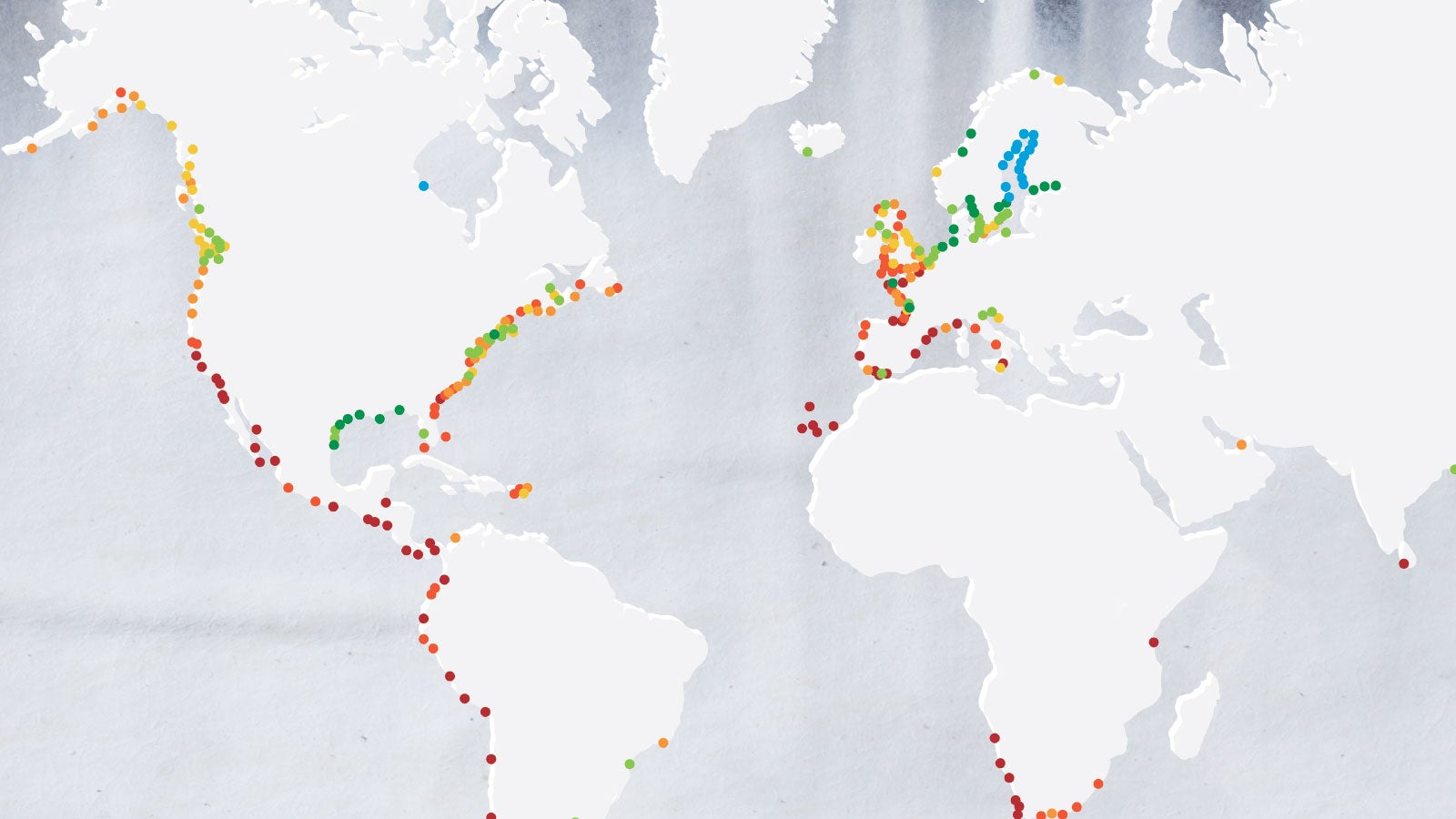
The Impact of Sea-Level Rise on Communities and Coastlines
Fall 2018 | By Laura J. Cole
On your next trip to the beach, you most likely won’t notice the change in sea level. It’s rising globally by only about 3 millimeters per year, which may seem insignificant to the average beachgoer.
But according to Thomas Wahl, a coastal engineer at UCF, those small changes over time can have a big impact on our coasts, especially in terms of storm surges and flooding.
“What’s dangerous are hurricanes, storms and nor’easters pushing water toward the coast,” Wahl says.
He explains it in terms of giving toddlers baths. Fill two tubs halfway with water. One child likes to play calmly with his toys, maybe pushing a boat around in between shampoo rinses, and another has full-on sea battles with hers. The rowdier child is more likely to splash water onto the floor.
Now, fill both tubs higher, and the likelihood of water spilling over onto the floor increases for both scenarios.
“As the bathtub fills up, the base water level gets higher and higher, meaning smaller storms (or calmer toddlers) have a higher likelihood to produce the same water level, which can lead to flooding,” Wahl says.
Wahl’s research, which was recently published in Nature, uses data from tide gauges around the world to examine the occurrence of these events, often referred to as 100-year storm surges.
Presently believed to have only a 1 percent chance of hitting in a given year, these storms are very dangerous and cause the most damage to homes and communities. And Wahl’s research has found that in some areas, they could occur as often as every year or two and be more severe.
When asked what advice he’s given to friends as a result of his research, he says, “Maybe don’t buy beach property, at least not on the ground floor or without other measures in place to prevent your home from being flooded. And get flood insurance.”
ESTIMATED FREQUENCY IN YEARS OF 100-YEAR FLOODS BY 2050
1–2 2–5 5–10 10–20 20–50 50–100 100–10,000
Data was collected from existing tide gauges. Locations without dots indicate either a lack of tide gauge data for that area or not enough data over an extended period of time to be reliable.
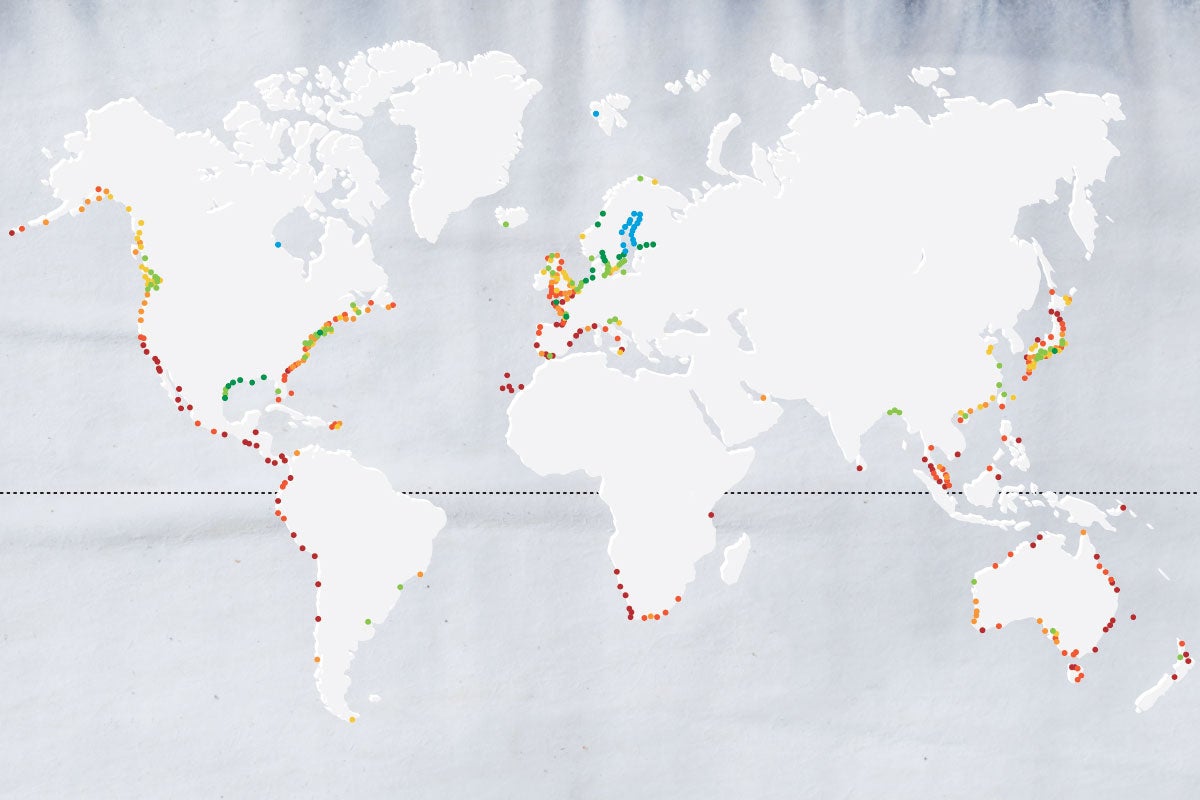
“Changes in sea-level rise may be imperceptible to the naked eye, but those changes over time, amplified by storm surges and flooding, lead to considerable loss of life and billions of dollars of damage each year globally.”Thomas Wahl
CHALLENGES AND SOLUTIONS
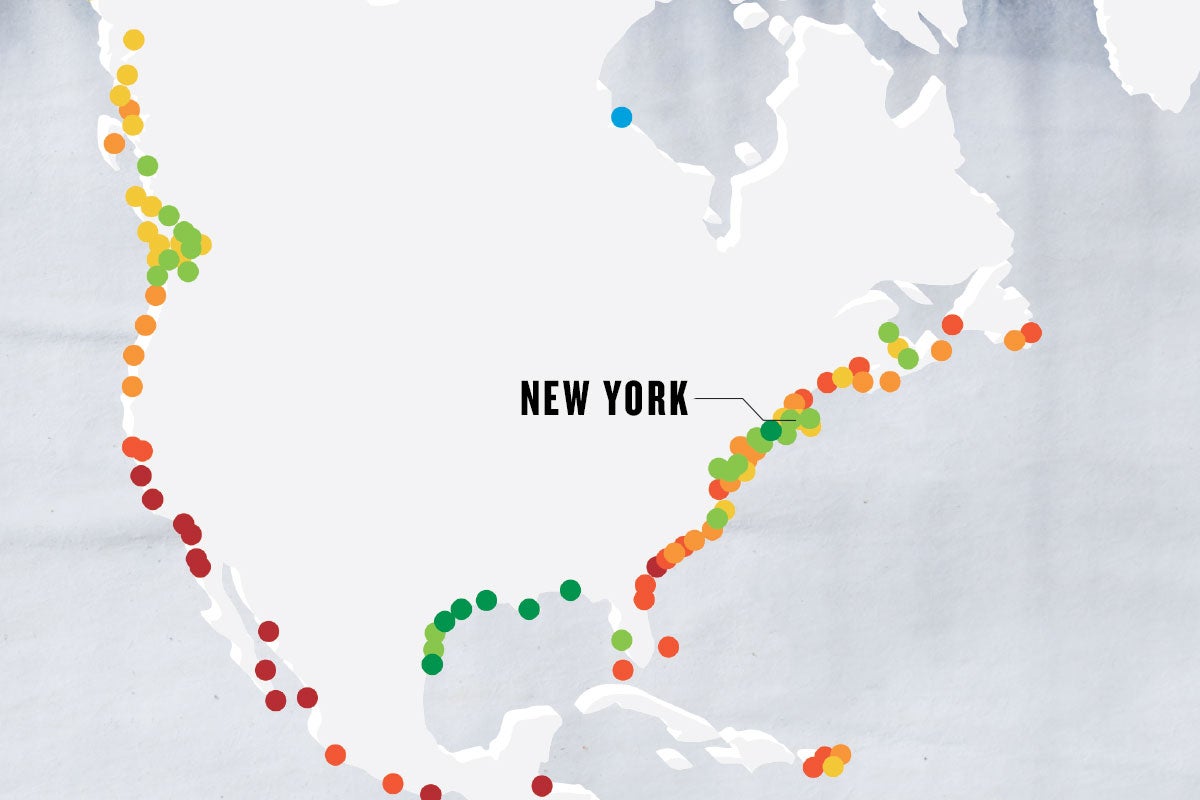
SOLUTION
RETREAT: NEW YORK
“Buyouts have started,” Wahl says, “in places like New York after Superstorm Sandy, where the government will buy property so owners can move away from the coast.”
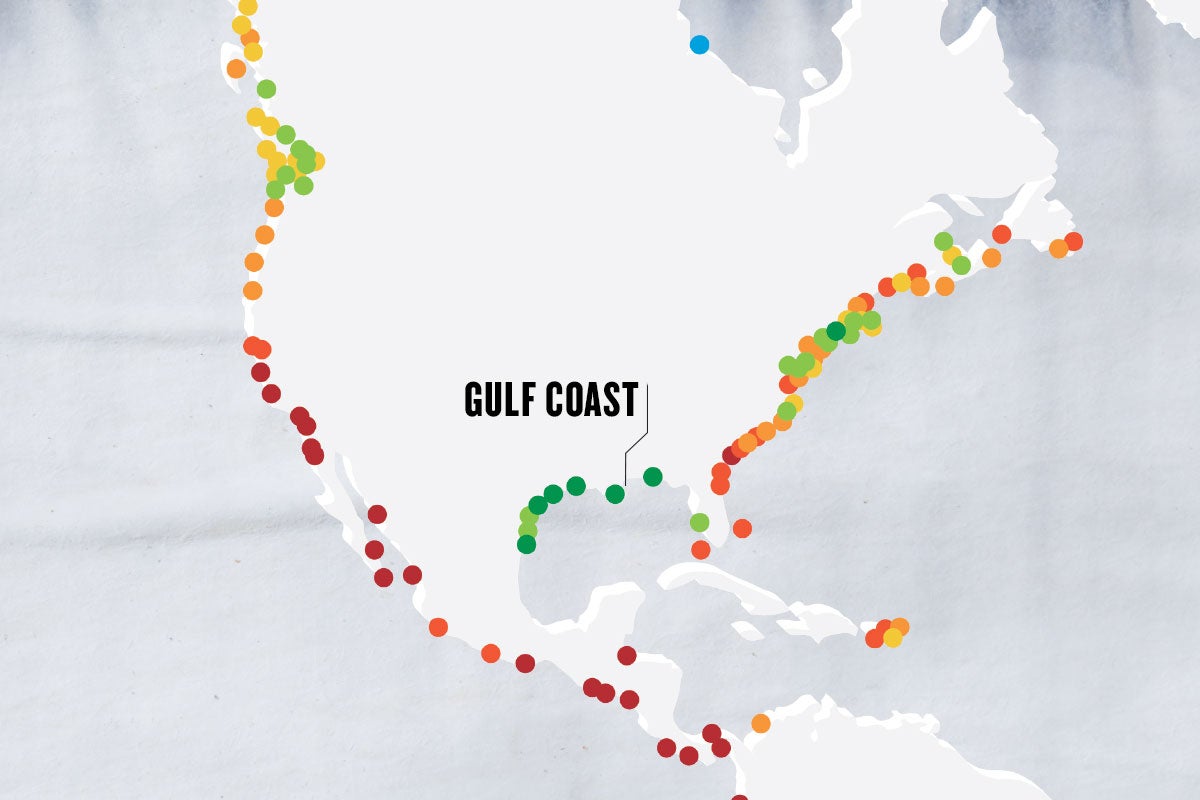
CHALLENGE
GULF COAST
Sinking land, such as along the Gulf of Mexico, is a result of pumping gas and extracting fluids out of the ground.
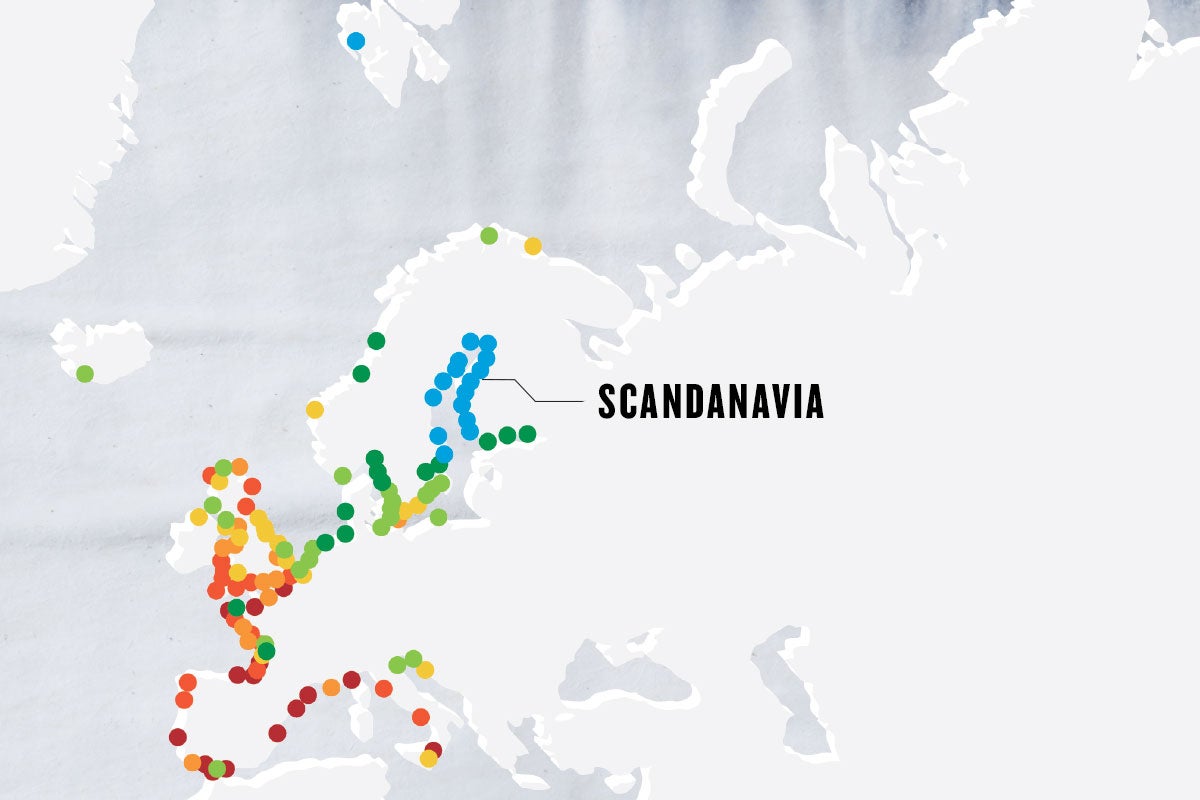
CHALLENGE
SCANDINAVIA
Land is rising near the Baltic Sea as a result of ice melting from the last ice age and reducing the load. “At least for now, people in Sweden can lean back and enjoy sea-level rise,” Wahl says.
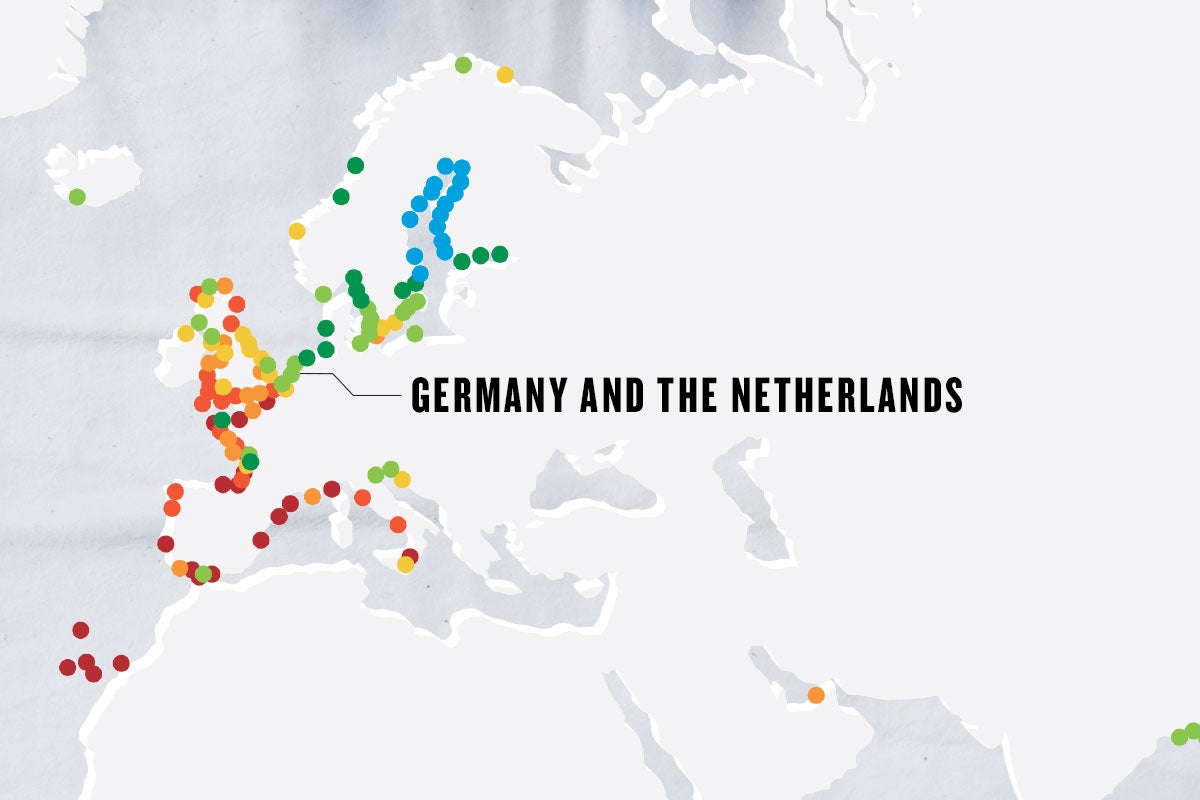
SOLUTION
BUILD UP: GERMANY AND THE NETHERLANDS
The Dutch and Germans have “built dikes, dunes and barriers that can be closed to protect coastal communities, ports, harbors and marinas,” Wahl says.
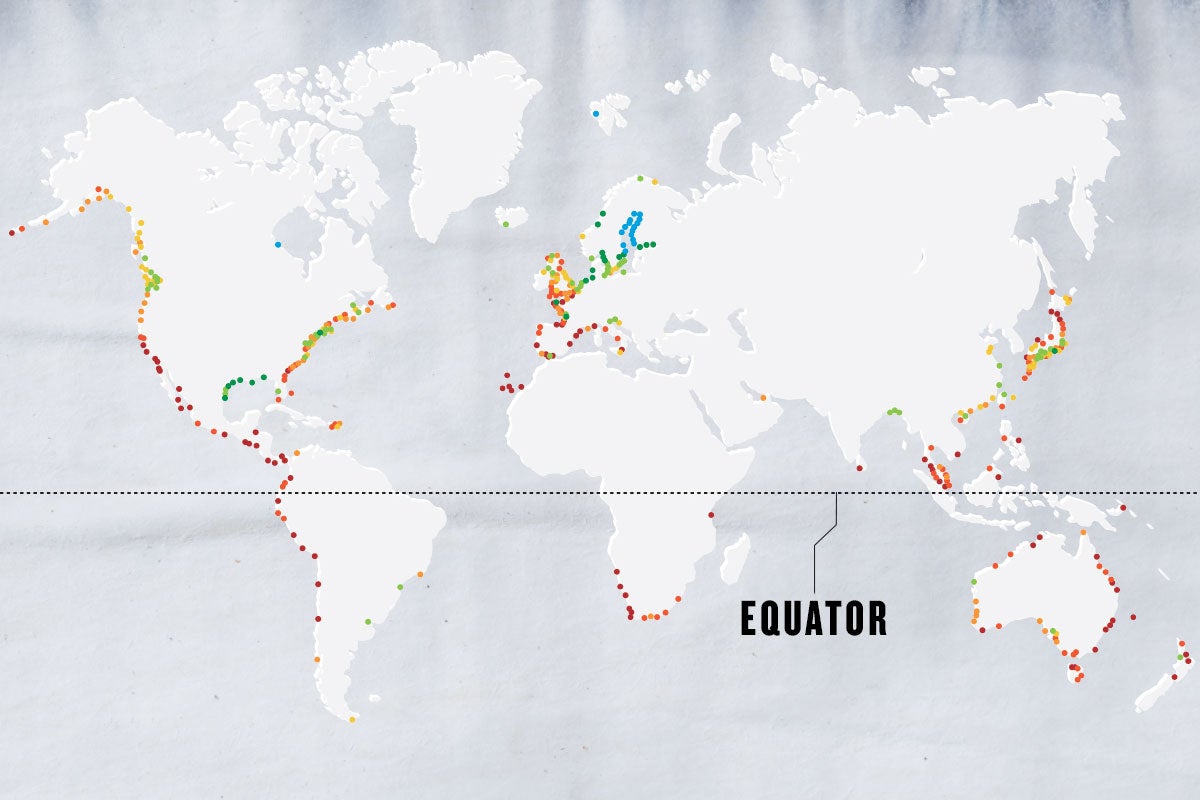
CHALLENGE
EQUATOR
Sea levels are rising the fastest along the equator. There are a few reasons for this, such as ice sheets and glaciers melting, causing the water to head toward the equator while the sea level near the polar ice caps drops.
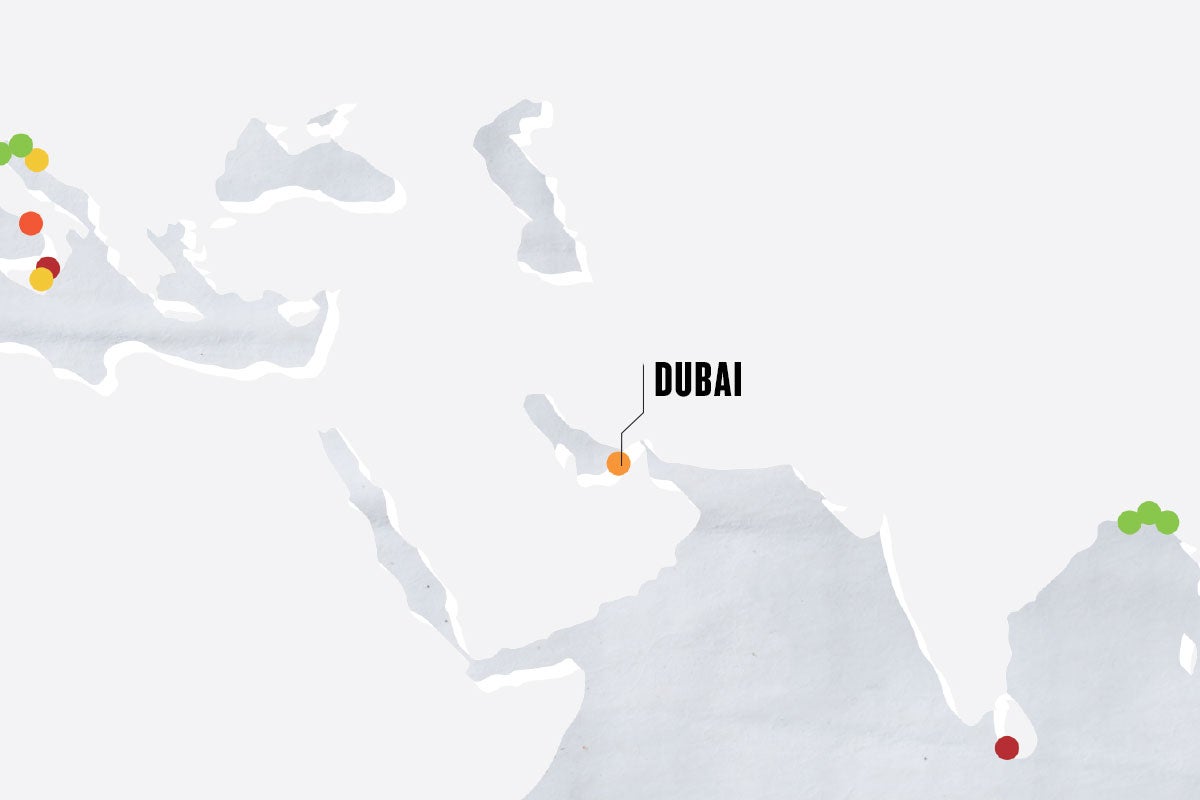
SOLUTION
ADVANCE THE LINE: DUBAI
Man-made islands, such as the Palm Islands and The World, are built by dredging sand from the Persian and Arabian gulfs’ floors to create resort destinations.
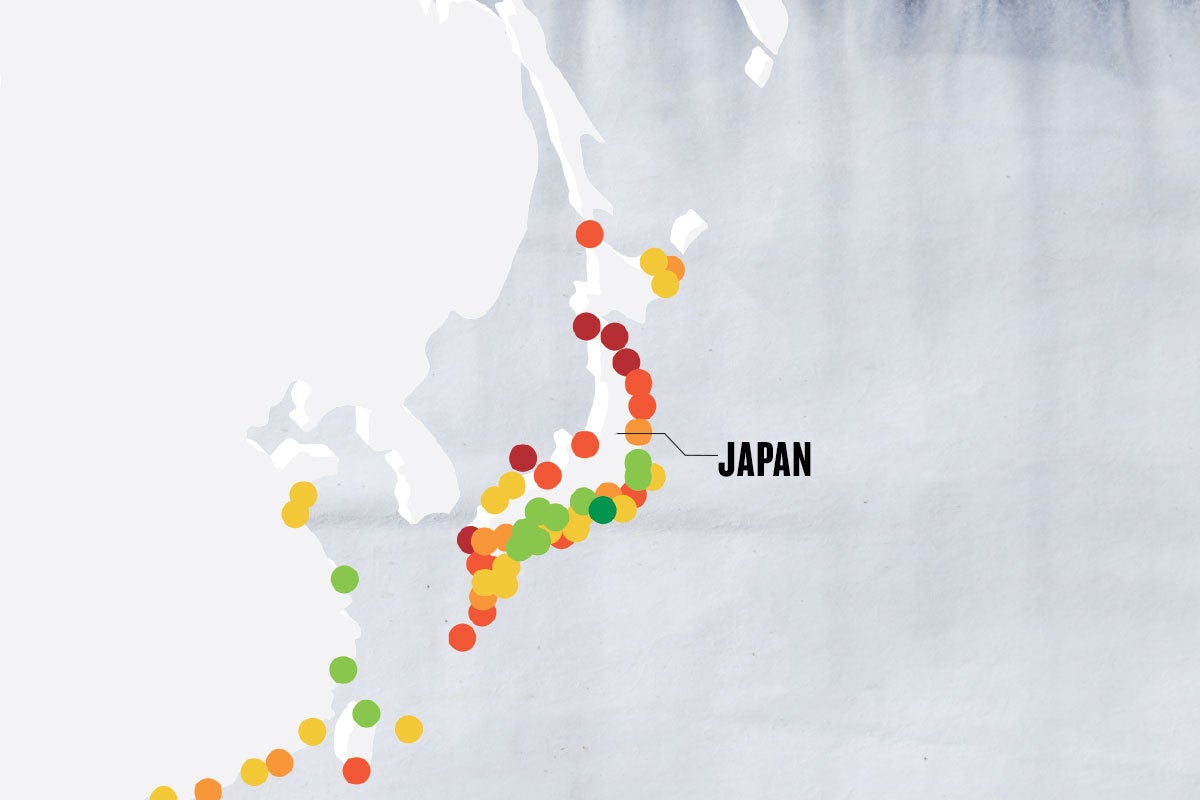
SOLUTION
JAPAN
After decades of groundwater extraction was causing Tokyo to sink, the government passed laws limiting the amount of water that could be pumped, which has helped slow the retreat significantly.
STRONGER TOGETHER
When it comes to Wahl’s research, he’s the first to admit he’s only one piece of the puzzle.
“I know a lot about sea level and storm surges, and I know my way around statistics,” he says. “But at some point, we need to know what we can do with this research. We have to take the next step. We need to answer: How many people will be affected, and how much will it cost us?”
That’s where UCF’s new National Center for Integrated Coastal Research comes in.
It places coastal engineers and oceanographers in conversation with geographers, who can produce maps to be used by stakeholders and policymakers; with economists, who can look at the impact to costs of goods and services around the globe; with biologists, who can say how much natural solutions such as wetlands and oyster reefs can offset potential damages; and with political scientists, who can determine what regulations are needed to help coastal communities be more resilient.
“Rather than just looking at water levels like I do, together, we’re able to look at the entire system almost as an organism that has to be protected and has to become more resilient if it wants to survive,” Wahl says.